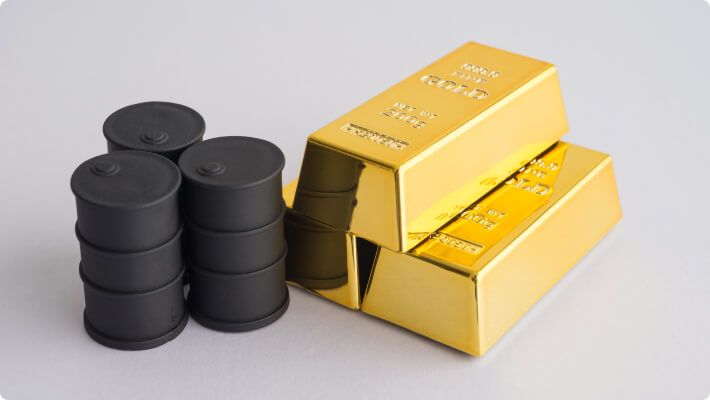Wednesday Nov 29 2023 07:51

6 min
The term Commodities is a broad umbrella that covers many products that are pretty much essential to everyday living. In this case, it’s raw, naturally occurring materials that are then processed in thousands of different ways, before turning into products everyone uses in their daily lives.
Crude oil, metals, gold, crops, sugar and so on are all part of the commodities family. These raw ingredients are taken away and turned into food, energy, and clothing.
One thing that sets commodities apart from other tradeable products is pricing. There is a higher degree of standardisation on prices worldwide. It doesn’t matter who is producing the asset or material in question.
For instance, gold produced in a Russian gold mine or Brazilian gold mine would have the same price.
This does change from asset to asset, however. It’s not a hard or fast rule. For example, certain crude oil blends are priced differently using different benchmarks, such as Brent Crude or West Texas Intermediate (WTI).
There are a number of reasons why traders like commodities.
Adding commodities to an investment or trading portfolio is also a great way to increase diversification. A diverse portfolio, in theory, is more insulated against the risks inherent to financial trading. If one instrument or asset, say equities, falls, then the commodities could help cover those losses.
We briefly touched on this earlier, but there are lots of different options available to would-be commodity traders.
Generally, commodities can be split into four categories:
Price action in commodities markets is defined by supply and demand. Generally, the higher the demand the higher the price and so on. Low supplies coupled with high demand can lead to high prices too.
We’ve seen this recently with oil markets. Crude oil output had been negatively affected by the COVID-19 pandemic. Demand was low and output was minimal. As of October 2021, demand is high, but output is being kept relatively scarce by producers such as the OPEC+ nations to protect prices.
However, commodities prices can be more versatile than other assets. This is because there are lots of factors at play relating to their production. For example, livestock levels may be impacted by health issues, such as foot and mouth disease. A bad harvest will impact wheat prices. Weather can affect production of commodities, such as a hurricane shutting down natural gas infrastructure in the Gulf of Mexico.
Global economic trends can affect prices too. China and India’s emergence as industrial powerhouses has caused the availability of metals like steel to drop off in other nations.
The above trends make commodities prices hard to predict. Prices can show high levels of volatility. As such, it can be seen as riskier than trading or investing in other assets. Remember: you should only invest or trade if you can afford to take any losses.

Commodities are typically sold on exchanges, in the same way stocks are traded on exchanges. In fact, many would say the birth of trading as we know it started with 18th and 19th century merchants trading crops.
At Markets.com, we offer commodities trading through contracts for difference (CFDs). These allow you to speculate on commodity price movements without owning the underlying asset. These are leveraged products, which means you can take a position with only a fraction of the trade’s value. This means your profits can be amplified – but so can your losses.
There are also commodity exchange traded funds (ETFs). These group together a number of assets into a single basket. Some ETFs will hold the physical assets they’re cover, for example a gold ETF might hold a certain amount of bullion or coins. Some are more complicated and synthetically mimic their underlying market.
A markets.com account will give you access to a wide range of commodity markets, as well as thousands other assets. Open yours today and start trading your way.